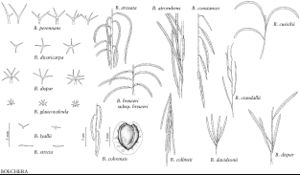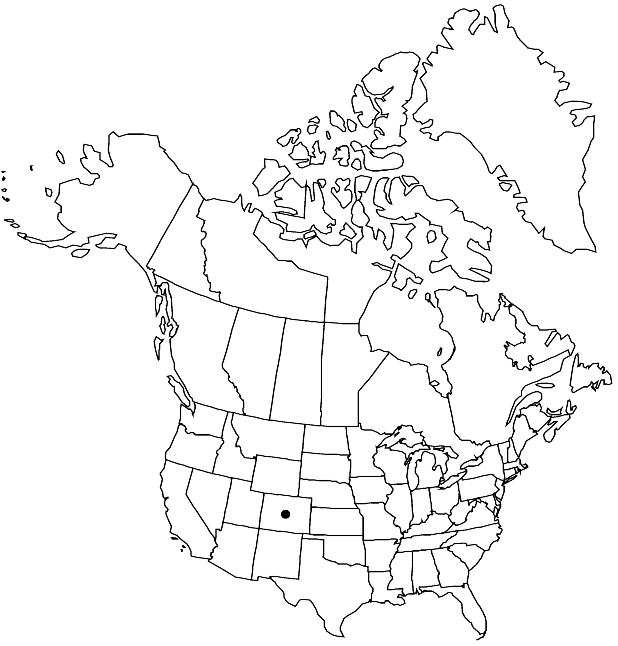Difference between revisions of "Boechera crandallii"
Phytologia 51: 369. 1982.
FNA>Volume Importer |
FNA>Volume Importer |
(No difference)
| |
Revision as of 22:54, 16 December 2019
Perennials; long-lived; (often cespitose); sexual; caudex somewhat woody. Stems usually 2–5 per caudex branch, arising from margin of rosette near ground surface, (1–)1.5–4 dm, densely pubescent proximally, trichomes short-stalked, 5–8-rayed, 0.1–0.2 mm, moderately to sparsely pubescent distally. Basal leaves: blade narrowly oblanceolate, 1.5–3(–5) mm wide, margins entire, ciliate along petiole base, trichomes (simple), to 0.6 mm, surfaces densely pubescent, trichomes short-stalked, 5–8-rayed 0.1–0.2 mm. Cauline leaves: 5–14, not concealing stem; blade auricles 0.1–0.5 mm, surfaces of distalmost leaves pubescent. Racemes 10–30-flowered, usually unbranched. Fruiting pedicels ascending to divaricate-ascending, straight, 5–10 mm, pubescent, trichomes branched. Flowers ascending at anthesis; sepals pubescent; petals usually white, 5–7 × 1–2 mm, glabrous; pollen ellipsoid. Fruits ascending to divaricate-ascending, not appressed to rachis, not secund, straight, edges parallel, 3–5.5 cm × 0.9–1.2 mm; valves glabrous; ovules 56–84 per ovary; style 0.1–0.5 mm. Seeds uniseriate, 0.8–1 × 0.6–0.9 mm; wing continuous (rarely absent), to 0.1 mm wide. 2n = 14.
Phenology: Flowering May–Jun.
Habitat: Rocky slopes and gravelly soil in sagebrush, mountain shrub, open conifer forests
Elevation: 2000-2700 m
Discussion
Of conservation concern.
Boechera crandallii is a sexual diploid known only from the Gunnison Basin of west-central Colorado. Despite its narrow range, the species appears to hybridize frequently, most notably with B. pallidifolia.
Selected References
None.

